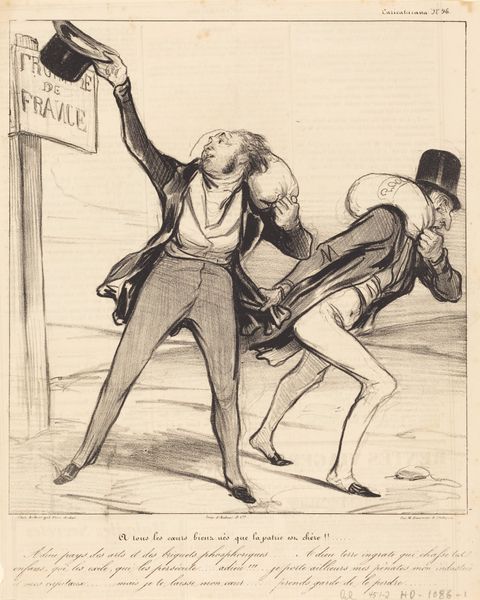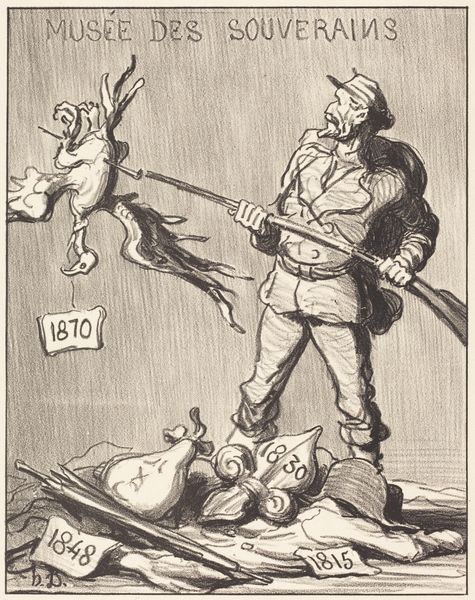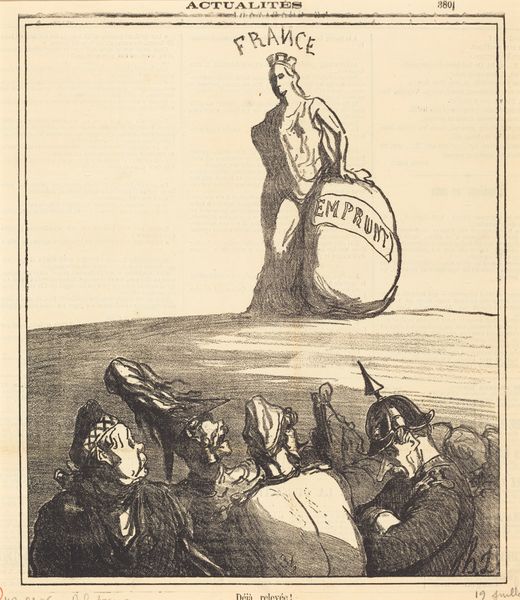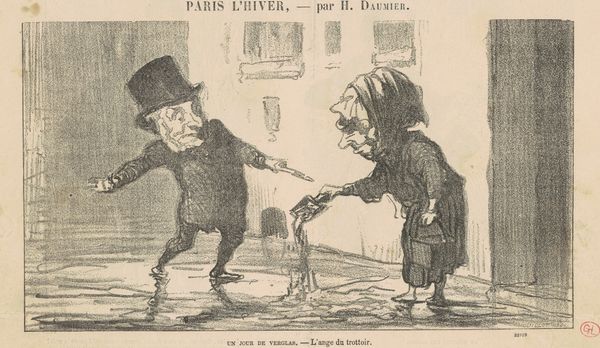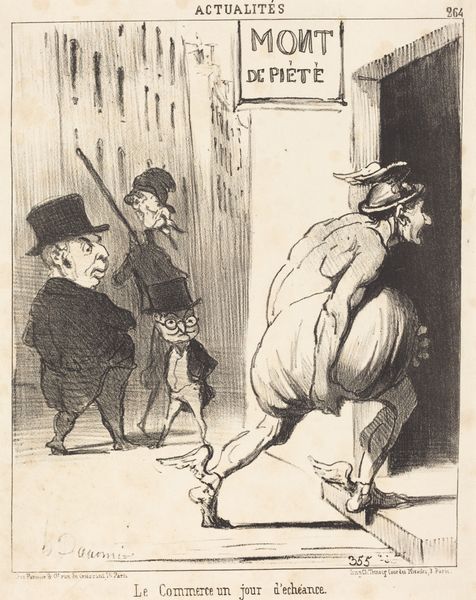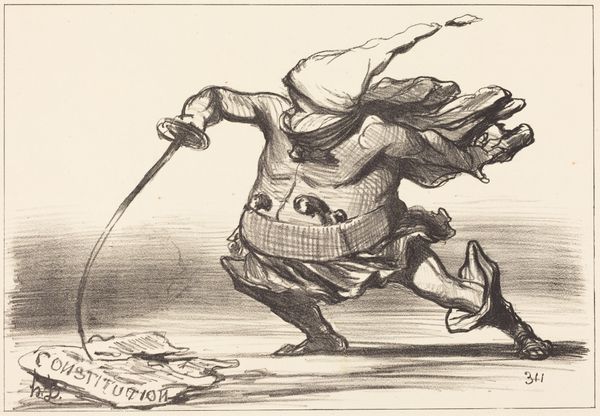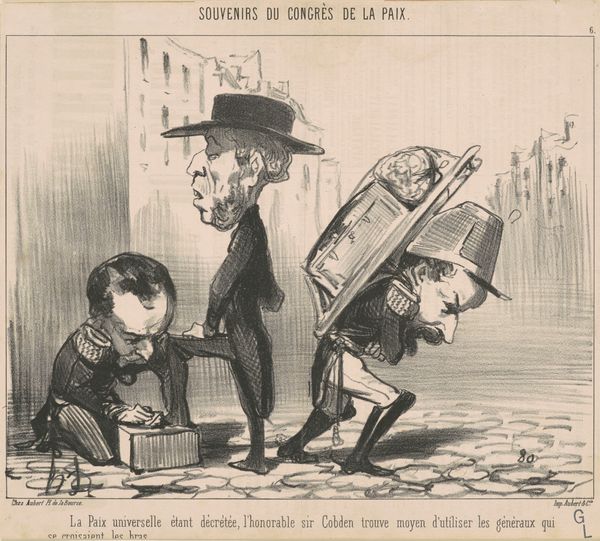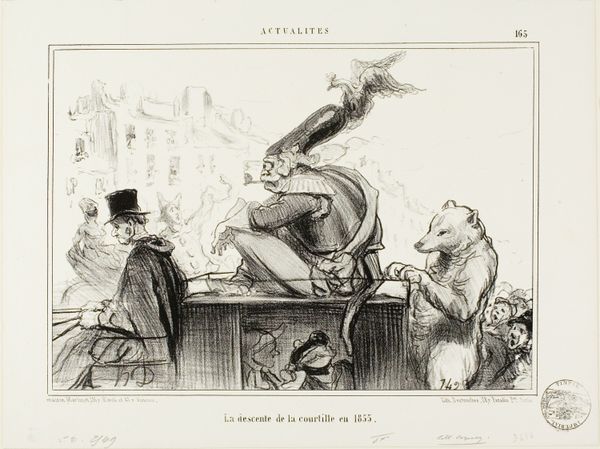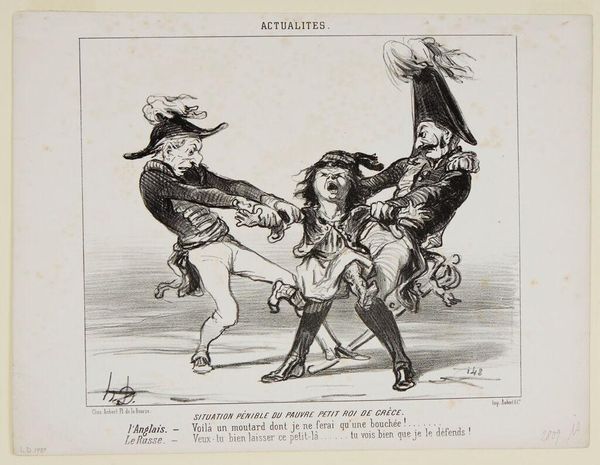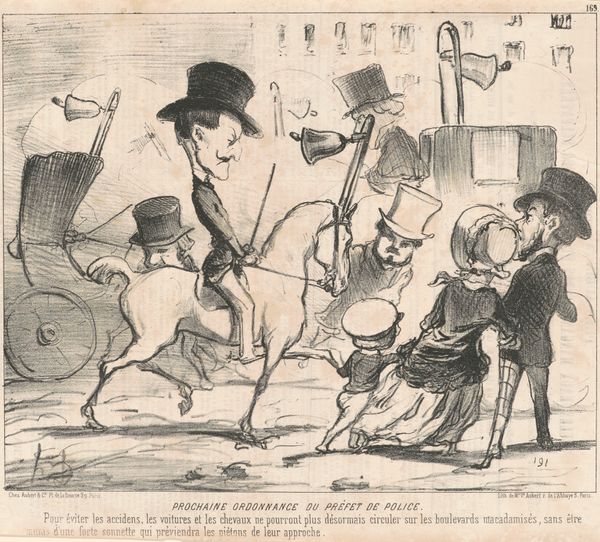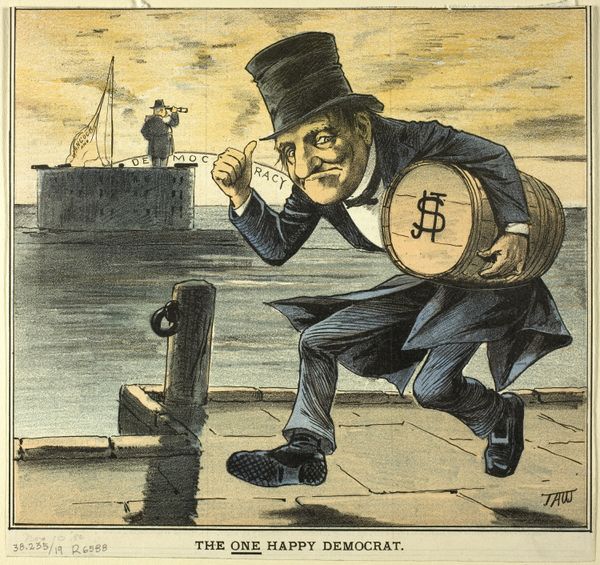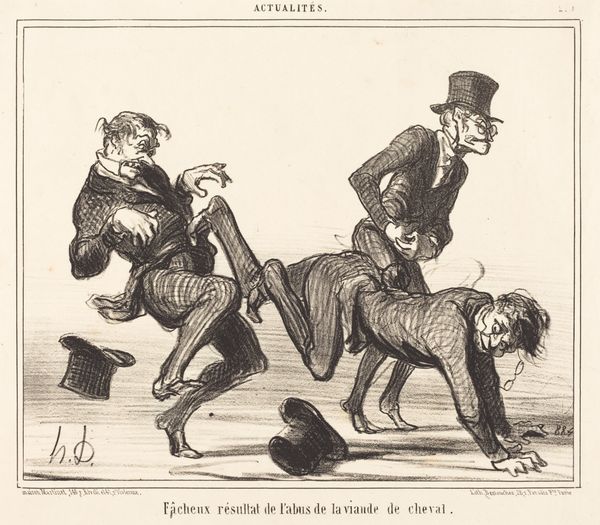
Copyright: National Gallery of Art: CC0 1.0
Editor: This lithograph by Honoré Daumier, from 1866, titled *La Balançoire politique...*, really captures my attention. It seems to depict the political climate in a rather cynical way, especially with that seesaw balanced on the word "BOURSE". What's your take on this? Curator: Indeed. Daumier, a master of social commentary, uses caricature here to critique the volatile political landscape. Notice how the "Bourse," or stock exchange, is presented as the foundation for this precarious balance. It highlights the role of financial power in shaping political fortunes. Who do you think the figures on the seesaw might represent? Editor: Well, on one side, we've got a figure who seems almost bourgeois, holding some sort of foliage… peace maybe? The other figure looks almost barbaric, wielding a sword. Are we talking about opposing factions in French society at the time? Curator: Precisely! This contrast encapsulates the tension between established bourgeois interests and revolutionary forces. Daumier was actively engaged in questioning these power dynamics during a period of immense social upheaval. This imagery ties directly into a larger conversation about class, power, and the legacy of revolution in 19th century France. Does that frame any current conversations in our societies? Editor: Definitely. Thinking about current debates around wealth distribution, I mean, this image feels really relevant. Curator: It does, doesn't it? By embedding political discourse within everyday imagery, Daumier reminds us that politics is never separate from social and economic structures. The ‘seesaw’ metaphor isn't just a political joke; it highlights the fragility of power when it depends solely on material capital. Editor: Seeing it that way gives the artwork so much more depth. It's not just funny; it's a challenge to the status quo. I am also wondering whether to frame it around Daumier as a Republican artist creating the lithograph under a monarchical regime... Curator: Now you are digging into critical areas about what that representation meant and what voices where given priority... Editor: Thank you, your context of how "Bourse" sets a dangerous stage for revolutionary factions shifts the image for me to a more complex state, in which balance will be fleeting at best. Curator: Exactly. The enduring strength of art like this lies in its ability to spark these reflections across different eras.
Comments
No comments
Be the first to comment and join the conversation on the ultimate creative platform.
